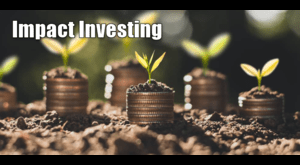Introduction: Shifting Paradigms in Investment
In recent years, Environmental, Social, and Governance (ESG) investing has emerged as a prominent trend reshaping the financial landscape. This article delves into the dynamics of ESG investing, exploring how investors can align financial goals with societal impact by integrating ESG factors into their investment strategies.
Opportunities in ESG Investing
1. **Market Demand and Growth**: ESG investing has gained momentum as investors increasingly prioritize sustainability and ethical considerations. This trend is driven by heightened awareness of climate change, social inequalities, and corporate governance issues, creating a robust market for investments that deliver both financial returns and positive societal impact.
2. Performance Potential: Studies indicate that companies with strong ESG practices often outperform their peers over the long term. By focusing on sustainable business practices, companies can mitigate risks, enhance brand reputation, and attract conscientious investors, thereby contributing to sustainable value creation.
3. Innovation and Adaptation: The transition towards a more sustainable economy is fueling innovation across industries, from renewable energy and clean technology to healthcare and social infrastructure. ESG-focused investors can capitalize on opportunities in sectors driving positive environmental and social change.
Challenges to Navigate
1. Data Quality and Standardization: ESG metrics can vary significantly across industries and regions, posing challenges in comparing and evaluating companies’ sustainability performance. Investors need robust data analytics and standardized reporting frameworks to make informed investment decisions.
2. Regulatory and Legal Risks: The regulatory landscape for ESG investing is evolving, with varying standards and disclosure requirements globally. Investors must navigate compliance complexities and stay abreast of regulatory developments to mitigate legal risks and ensure transparency.
3. Integration into Investment Strategies: Successfully integrating ESG considerations into investment strategies requires expertise in assessing non-financial risks and opportunities. Investors need to adopt rigorous due diligence processes and engage with companies on ESG issues to drive meaningful impact.
Conclusion: Investing for a Sustainable Future
ESG investing represents a paradigm shift towards aligning financial goals with societal and environmental stewardship. By embracing ESG principles, investors can contribute to positive change while accessing opportunities for long-term financial growth. As the ESG investing landscape continues to evolve, informed investors have the opportunity to lead in shaping a more sustainable and resilient global economy.
In summary, ESG investing offers a compelling framework for investors seeking to achieve holistic returns—financial, environmental, and social. By navigating the opportunities and challenges outlined in this article, investors can harness the transformative power of sustainable finance to build a more equitable and prosperous future for all stakeholders.
 kisskh kisskh | Asian Dramas & Movies
kisskh kisskh | Asian Dramas & Movies





